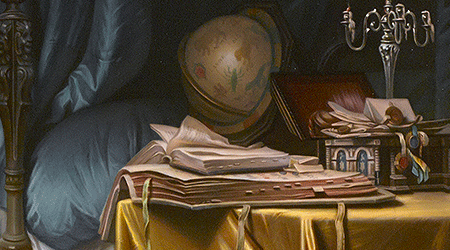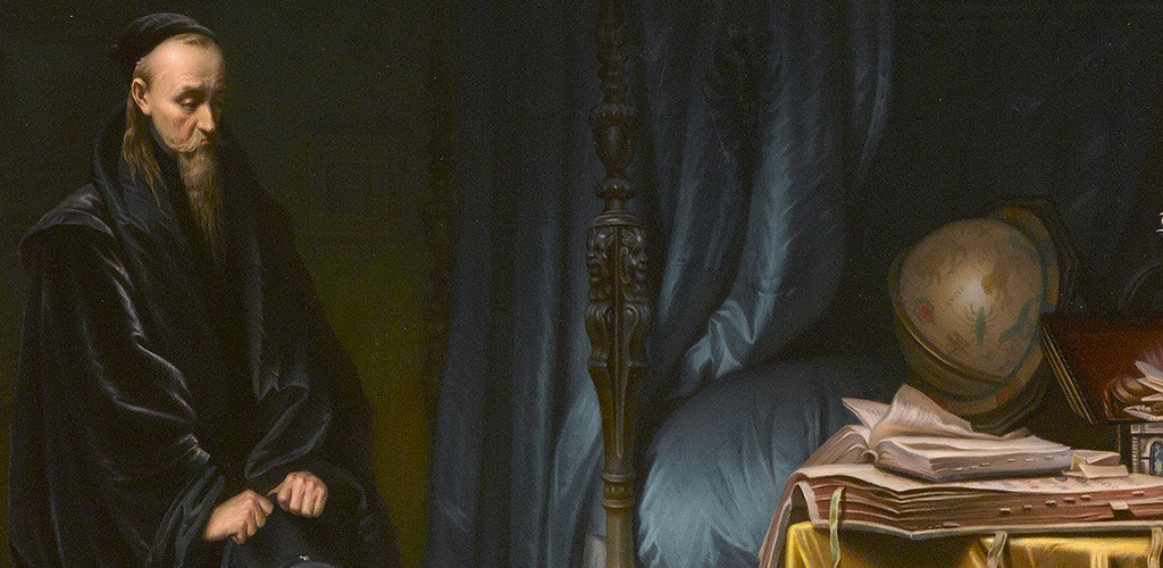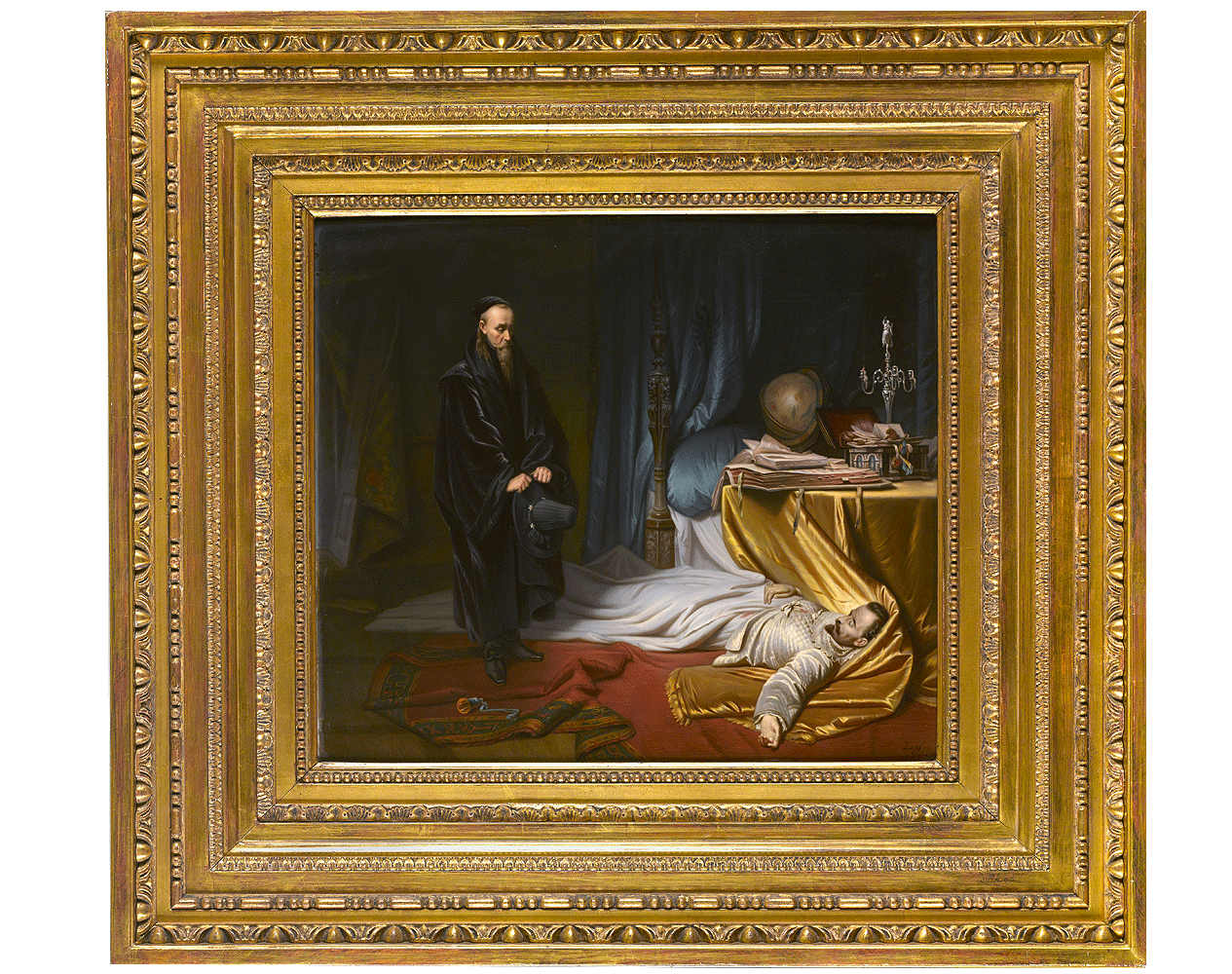A large porcelain plaque produced by the Royal Porcelain Factory in Berlin. The subject, Seni at the Dead Body of Wallenstein, is after the painting by Carl Theodor von Piloty (1826 – 1886) completed in 1855, now in the Neue Pinakothek, Munich. Shiller’s tragic trilogy and Goethe’s theatrical production are loosely based on these historical events.
Albrecht Wenzel Eusebius von Wallenstein was a treasonist Bohemian soldier and politician. During the Thirty Years’ War, he became the supreme commander of the armies for the Holy Roman Empire. Wallenstein fails at the height of his power when he begins to rebel against his emperor, Ferdinand II. Accused of treason, he was assassinated by one of the army’s officials, Walter Devereux. Giambattista Zenno (called Seni) was Wallenstein’s astrologer. Seni repeatedly warns Wallenstein of impending danger but is also thought to have assisted with the assassination.













